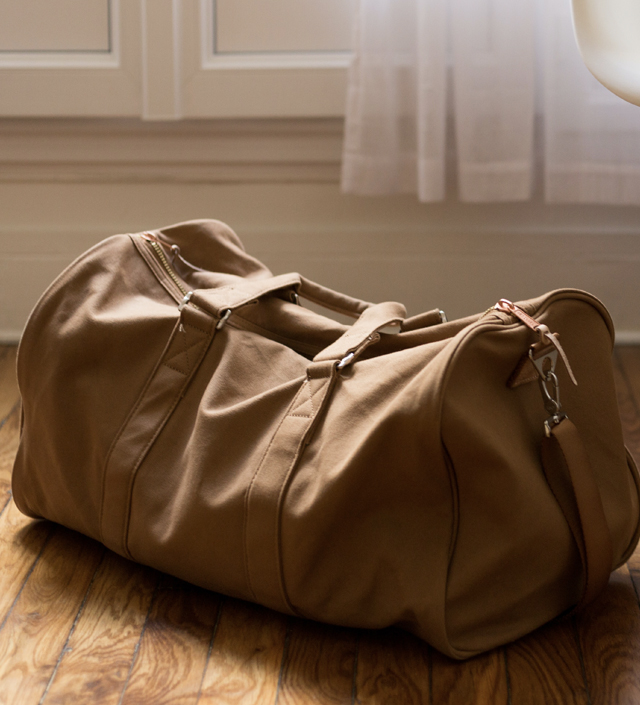 I have friends who keep “go bags” next to their front door. I first heard the term when the Boston Marathon Bomber was suspected of lurking in a nearby neighborhood. A friend packed his “go bag” full of essentials in the event he was evacuated from his home at a moment’s notice.
I have friends who keep “go bags” next to their front door. I first heard the term when the Boston Marathon Bomber was suspected of lurking in a nearby neighborhood. A friend packed his “go bag” full of essentials in the event he was evacuated from his home at a moment’s notice.
On a much lighter note, I also recall the hilarious scene in “I Love Lucy” where Lucy and Ricky kept a “go bag” of sorts near the front door in anticipation of her heading to the hospital to deliver Little Ricky.
A few of my neighbors managed some of their COVID related anxiety by packing one, too.
Here’s what I recommend clients put into their “go bag.”
Paperwork First
- Health insurance card, government issued ID, and a credit card.
- Updated list of medications, including dosages and administration instructions so that inaccuracies between a client’s self-prepared list of meds and those the care facility sets up can be compared and mismatches questioned.
- A brief, pre-written, medical history. Since I don’t know everything that has happened to the client, we prepare it together.
- A list of allergies — not just of medications, but also of foods and anything else. One client is allergic to cotton. If this is not clearly documented, a world of preventable troubles comes her way.
- Dietary considerations: Low-sodium, diabetic, halal, kosher, vegan, vegetarian, dairy-free, gluten free.
- A written description of communication considerations: Preferred language, confusion if someone speaks rapidly, and any speech or hearing impairments.
- A list of contact names: Family, friends, doctors, therapists, caretakers, and the name and contact information of the client/patient!
- Copies of and contact information for the primary and secondary healthcare agent and the agents named in the durable power of attorney. The agent under the durable power of attorney can check with health and long-term care insurance companies to see what is covered.
- Religion or faith preferences.
“Transition” Items
- A few extra doses of whatever meds need to be dispensed. This includes inhalers and CPAP machines. Once admitted, most facilities won’t let these be administered. However, more than once my clients have received permission to take them because the pharmacy was backed up.
- A voice recorder, note taking app, or notebook and pen to capture the names of caregivers and doctors, questions and instructions.
- Tampons, sanitary napkins and incontinence supplies (including adult diapers), if any of these would be useful.
- Snacks, bottles of water and juice, tea bags, packets of hot chocolate, mints, gum and a reusable water bottle to fill up as needed. (Of course, items will vary depending on dietary/medical restrictions.) Also, dollar bills and change in case something in the vending machine catches their attention.
- Portable hobbies: Needlepoint; chess; word puzzles; a good book or magazine; crayons and a coloring book; an iPad loaded with music, podcasts, audio books, and videos that can also be used for emailing, web surfing and texting; and a deck of playing cards.
- Phone and watch chargers and extra-long charging cables. Also, a rechargeable battery pack. Clients may not wish to part with their device so that it can be charged at the front desk…but the battery can be used to recharge devices and then recharged at the desk.
Little Luxuries
- It’s a luxury to have slippers, clogs or Crocs for those long walks to the bathroom; a pair of shorts or sweatpants to wear under the gown for warmth and privacy; and a big sweater or polar fleece jacket that zips up the front. A hat and a pair of warm socks are also treats.
- If clients end up in the emergency room overnight, it will be more bearable if they packed earplugs, eyeglasses, hearing aids, a favorite brand of toothpaste, denture cream, a razor, chewing gum, lip balm and an eye mask. Other items to consider are a small container of soap, shampoo and conditioner; a brush or comb; and maybe a tincture of a favorite essential oil. Peppermint, lavender or patchouli may push out some of the smells of the facility. I also suggest clients pack hand cream, deodorant, contact lens solution and case, face and body wipes, hand sanitizer; soft and puffy facial tissues, because the ones supplied by the hospital will leave a lot to be desired; disinfectant wipes so that counter tops, phones and bed railings can be cleaned; saline nasal spray; a small bed lamp; and a stand for their iPhone or iPad.
- They should also bring a roll of making tape, a Sharpie, and a few plastic trash bags so that things can be stored, labeled and easily travel.
Once the client is admitted and settled, these items are also usually appreciated:
- Note cards and stamps.
- A journal and guestbook so that visitors and thoughts can be tracked.
- Flip flops, for the shower, to mitigate the chance of slipping.
- Several pairs of clean underwear.
- A few mementos from home: Photos of family, pets, friends, and favorite places will help supply conversation starters for staff.
- A mirror, nail clippers, emery board, Ziplock bags (one into which to put jewelry so a companion can safely take it home), a plastic bag into which to put soiled laundry, and maybe a small bed lamp so that the overhead lights can be turned off when reading.
- Also consider bringing a comfortable outfit for the trip home.
Additional Reading: Help Surgery-Bound Clients Select Post-Care Facilities
An Ancillary Bag
Finally, I perceive clients as rock stars if they also pack an ancillary bag for me, the companion.
“Finally, I perceive clients as rock stars if they also pack an ancillary bag for me, the companion.”
Many a time I have packed a client into the car and travelled to a scheduled 10:00AM appointment and found myself still standing in the hallway of an emergency room at 10:00PM because things didn’t go as planned and admission was required.
Travel-sized deodorant, toothbrush, toothpaste, moisturizer, lip balm, hand wipes, Ibuprofen or acetaminophen, antacid, gum, breath mints, bandages, a disposable pair of reading glasses (I find that the later it is…the more magnification I need!), contact lens holder and solution, notebook and pen, bottle of water, phone charger and cable, a snack or two, earphones, puzzle book and anything thoughtful that my client thinks may delight me makes the wait much less grueling.
I sleep better knowing that my clients have considered the need for them and me to unexpectedly leave the house. They each tell me that they do, too.
One last tip: if there isn’t an extra of anything on this list so that it can’t be put in the “go bag,” like an iPad, eyeglasses, hearing aids or phone, clients should make a list of additional things that should be grabbed, so that they don’t get left behind.
Estate Planning and Probate Attorney Deborah Danger, Esq., LL.M. (taxation) is the managing member of DangerLaw, LLC, Newton, Mass. Contact her at deborah@dangerlaw.com.







